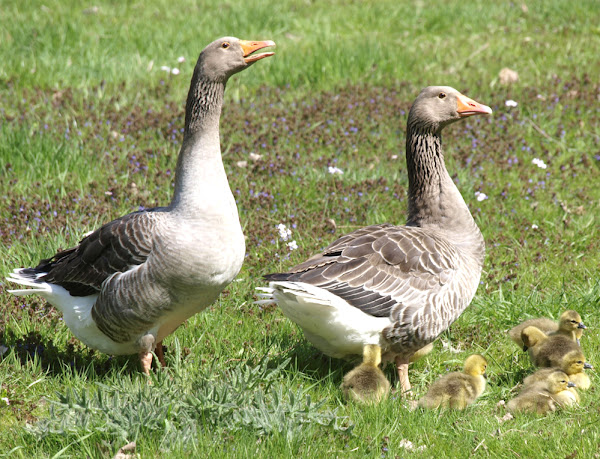The Pomeranian goose is a breed of domestic goose from Germany. It is also known as the Rügener goose, German: Pommerngans, and French: L’oie de Pome’ranie. It was developed by Northern German farmers of Pomerania as early as 1500. But it is an officially recognized breed since 1912.
The breed is very popular as a market goose throughout Europe, especially in Germany, Poland and in Slavic communities around the Baltic region.
The Pomeranian goose breed was traditionally bred to have a large amount of breast meat on them. It was also used for delicacies like smoked goose breast in it’s native region of Pomerania, Germany.
The breed was standardized in the United Kingdom in 1982. It entered the American Standard of Perfection in 1977 as Saddleback Pomeranian and are standardized in Gray and Buff. Read some more information about the breed below.
Pomeranian Goose Characteristics
The Pomeranian goose is a large breed of domestic goose. It is a very beautiful breed and is the only descendant of the Greylag goose specifically bred for a single-lobed paunch.
These birds often have two lobes nonetheless due to genetic variation and inbreeding in North America. The breed is usually white, gray, saddleback buff or saddleback gray in coloration.

But only the Saddleback variety is available in the North America, in both Buff and Grey. Legs, beak and feet of these birds are deep pinkish-red colored.
Average mature body weight of the Pomeranian ganders is between 8.2 and 10.9 kg. And average live body weight of the fully grown geese vary from 7.3 to 9.1 kg. Photo and info from Wikipedia.
Uses
Pomeranian goose is a dual purpose breed. It is good for both meat and eggs production.
Special Notes
The Pomeranian goose is quite social and chatty birds. Some of the birds have docile temperament, and some may respond aggressively.
These birds tend to greet visitors noisily, so they make excellent watch birds. The geese are seasonal layers. They are excellent layers and can lay up to 70 eggs per season.
Usually a gander can be mated with 3-4 geese. However, review full breed profile of the Pomeranian goose in the following chart.
| Breed Name | Pomeranian | |
| Other Name | Rügener goose, German: Pommerngans, and French: L’oie de Pome’ranie | |
| Breed Purpose | Meat, eggs, watch | |
| Special Notes | Quite social, chatty, some birds have docile temperament while others may respond aggressively, tend to greet visitors noisily, excellent watch birds, geese are seasonal layers, geese lay up to 70 eggs per season | |
| Breed Class | Large | |
| Ganders | 8.2-10.9 Kg | |
| Geese | 7.3-9.1 Kg | |
| Broodiness | Average | |
| Climate Tolerance | All climates | |
| Egg Color | White | |
| Egg Size | Large | |
| Egg Productivity | Up to 70 eggs per year | |
| Flying Ability | Average | |
| Varieties | Gray, white, saddleback buff and saddleback gray | |
| Rarity | Common | |
| Country/Place of Origin | Germany |





